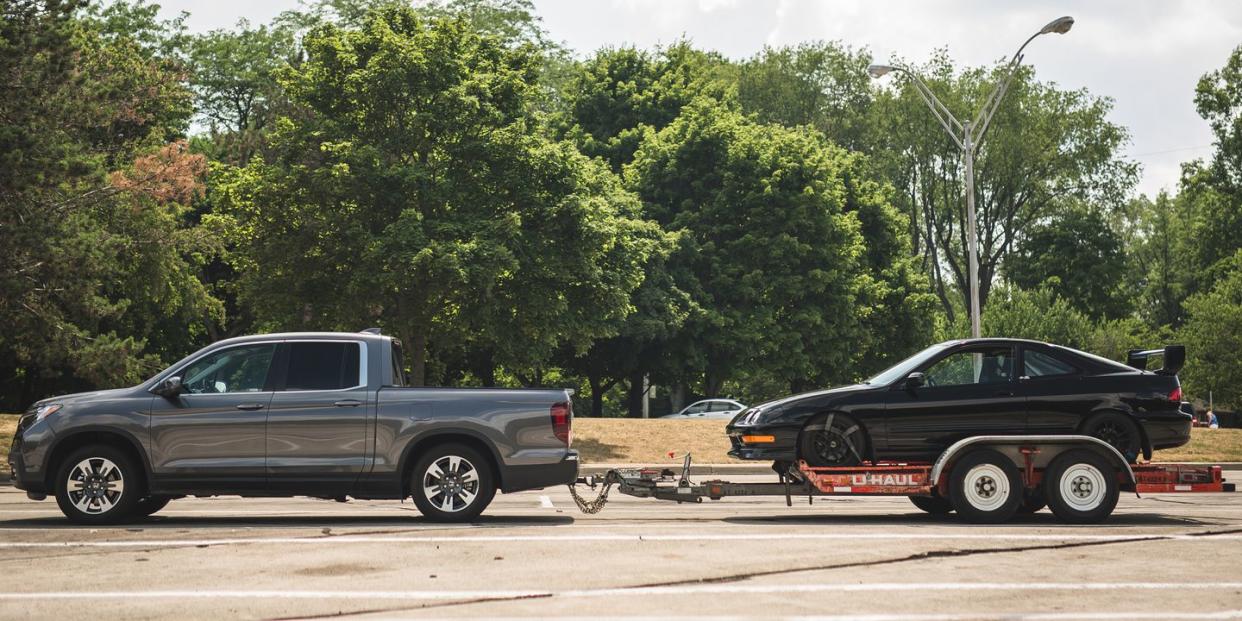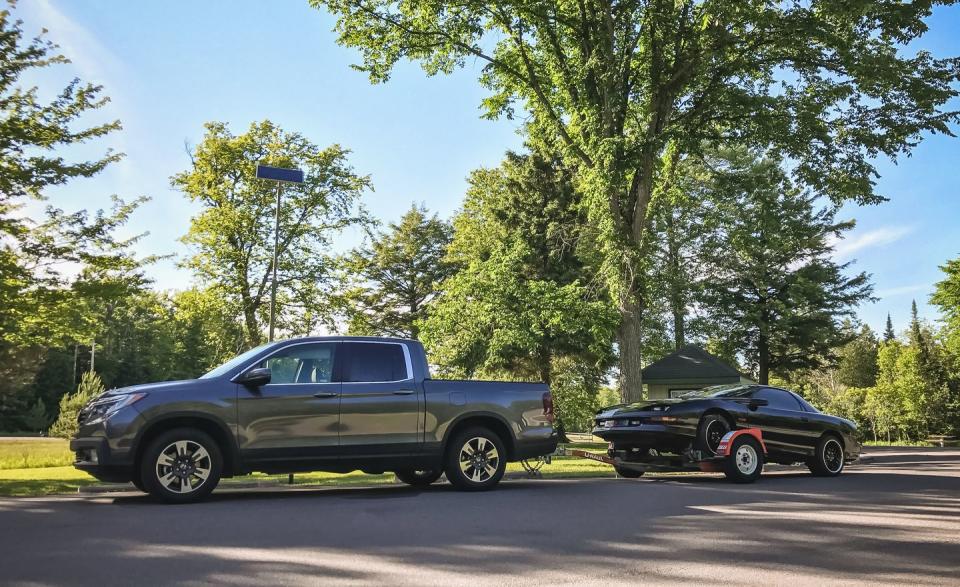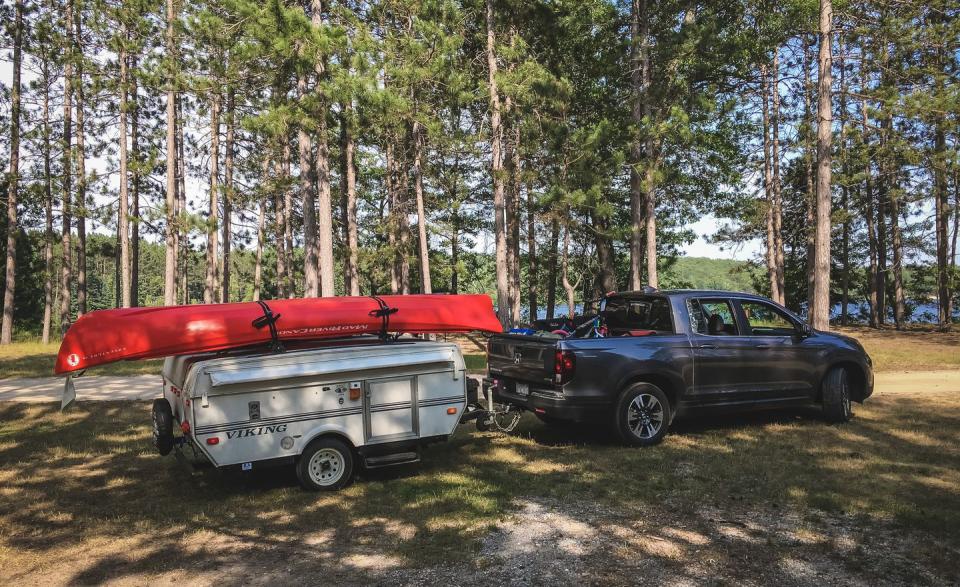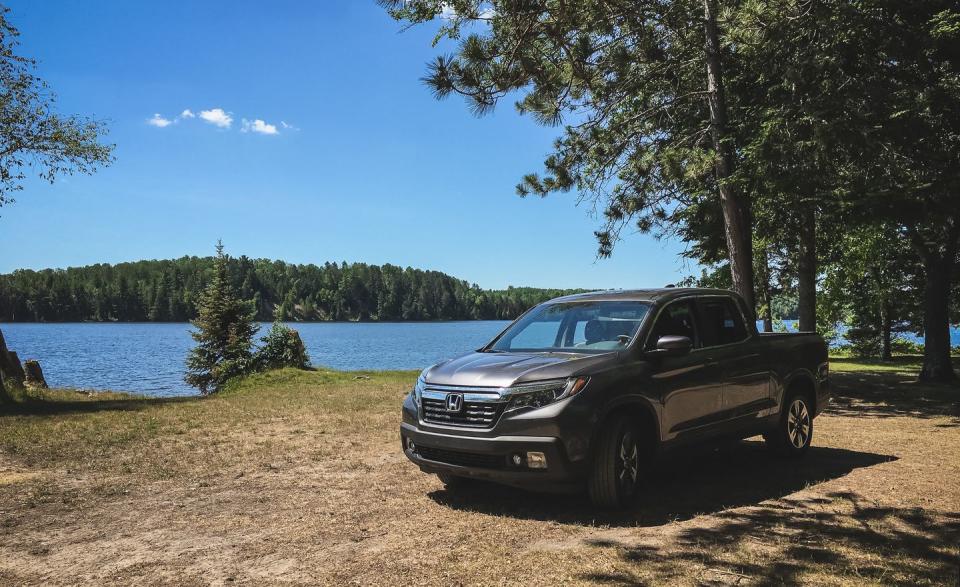2019 Honda Ridgeline: Testing Towing in Our Long-Term Unibody Pickup

In introducing our then-sparkling-new 2019 Honda Ridgeline to our long-term test fleet, we promised that "towing, camping, tailgating, hauling, commuting, and road-tripping" were "all on the agenda." Already our staffers have been doing pretty much all of those activities using the Ridgeline, a testament to the truck's versatility.
Through the Ridgeline's first 10,000 miles-a milestone reached and surpassed quicker than we could find the time to write this update-it saw a disproportionate emphasis on towing. So, we’re going to focus on that truck litmus test in this report.
WHAT WE LIKE: That the Ridgeline can, in fact, tow. You might be thinking, "Of course it can tow. It's a pickup!” But that isn't a foregone conclusion, owing to the Ridgeline’s unibody construction and relatively low 5000-pound tow rating-which is a few thousand pounds shy of body-on-frame competitors in the mid-size truck segment. Factor in the Honda's transverse-engine, front-drive powertrain (our truck is equipped with the optional all-wheel drive) and minivan roots, and you can understand why internet commenters and die-hard truck folks might dismiss it as unfit for towing duty.
We're more enlightened. And besides, the Honda performs well dragging something behind it, but with two asterisks: The first is that if the trailer is tall and boxy, the Honda works noticeably harder than with lower-profile cargo such as a car on a flatbed trailer. Second, although the Ridgeline can capably handle loads as heavy as its 5000-pound rating, that still falls short of competitors' maximum capacities. Curiously, Honda doesn't offer a trailer-brake controller as a factory accessory, only an option for an underdash hookup for one (our truck came so equipped). We snagged a Honda-specific plug adapter for our Prodigy P2 controller, plugged it in, and sticky-taped it to the underside of the dashboard, although a more integrated solution would be welcome.
Buyer's Guide associate editor Eric Stafford dragged his F-body Chevrolet Camaro from Michigan's Upper Peninsula some 400 miles back to C/D's Ann Arbor headquarters with ease using a rented tow dolly, all while getting 17 mpg. (For comparison, our truck has so far averaged 21 mpg through nearly 16,000 miles.) Staff photographer Michael Simari similarly saw towing success pulling his Acura Integra track car atop a steel trailer to GingerMan Raceway on Michigan's west coast. The Honda shrugged off the maximum-capacity load like it wasn't there while returning 16 mpg. Online copy chief Rusty Blackwell's experience dragging a pop-up camper loaded with a canoe and a kayak likewise was bereft of tragedy or surprise, and the Ridgeline averaged 19 mpg during his trip.
It was technical editor David Beard who discovered that, when towing a trailer that stands far taller than the Ridgeline, the resultant wind resistance poses an issue. In spite of Beard's box trailer's low mass-estimated to be less than 2000 pounds loaded-at highway speeds it had the Honda's V-6 engine screaming along in fourth gear, drinking a gallon of regular every nine miles. The only other towing-related demerit has to do with the Honda's squishy brake pedal and the brakes' lack of initial bite. Our Ridgeline isn't great at stopping when unladen-just check its long 191-foot stopping distance from 70 mph-and adding a trailer to the mix leaves us wishing the stoppers were stronger.
WHAT WE DON’T LIKE: One odd annoyance that cropped up literally from the first time we pushed the ignition button is . . . the ignition button. In order to start the Ridgeline, one must place a foot hard on the brake pedal before pressing the starter-and then keep their foot there until the engine fires, a slow two-count later. Removing your foot from the brake before the engine starts results in an aborted start. It takes getting used to.
WHAT WENT WRONG: Nothing. The Ridgeline's dashboard alerted us that it was time for an “A1” service at 8700 miles, and $75 later the Honda was happy with fresh engine oil, a new oil filter, rotated tires, and an inspection from the dealer.
WHERE WE WENT: Already, it has traveled far and wide. Our Ridgeline was pressed into service immediately upon its arrival in our offices as a support vehicle for our annual Lightning Lap track test in Virginia before traveling to Northern Michigan numerous times for summer vacations and making a jaunt to Cooperstown, New York.
Months in Fleet: 5 months Current Mileage: 15,893 miles
Average Fuel Economy: 21 mpg
Fuel Tank Size: 19.5 gal Observed Fuel Range: 400 miles
Service: $75 Normal Wear: $0 Repair: $0
('You Might Also Like',)




